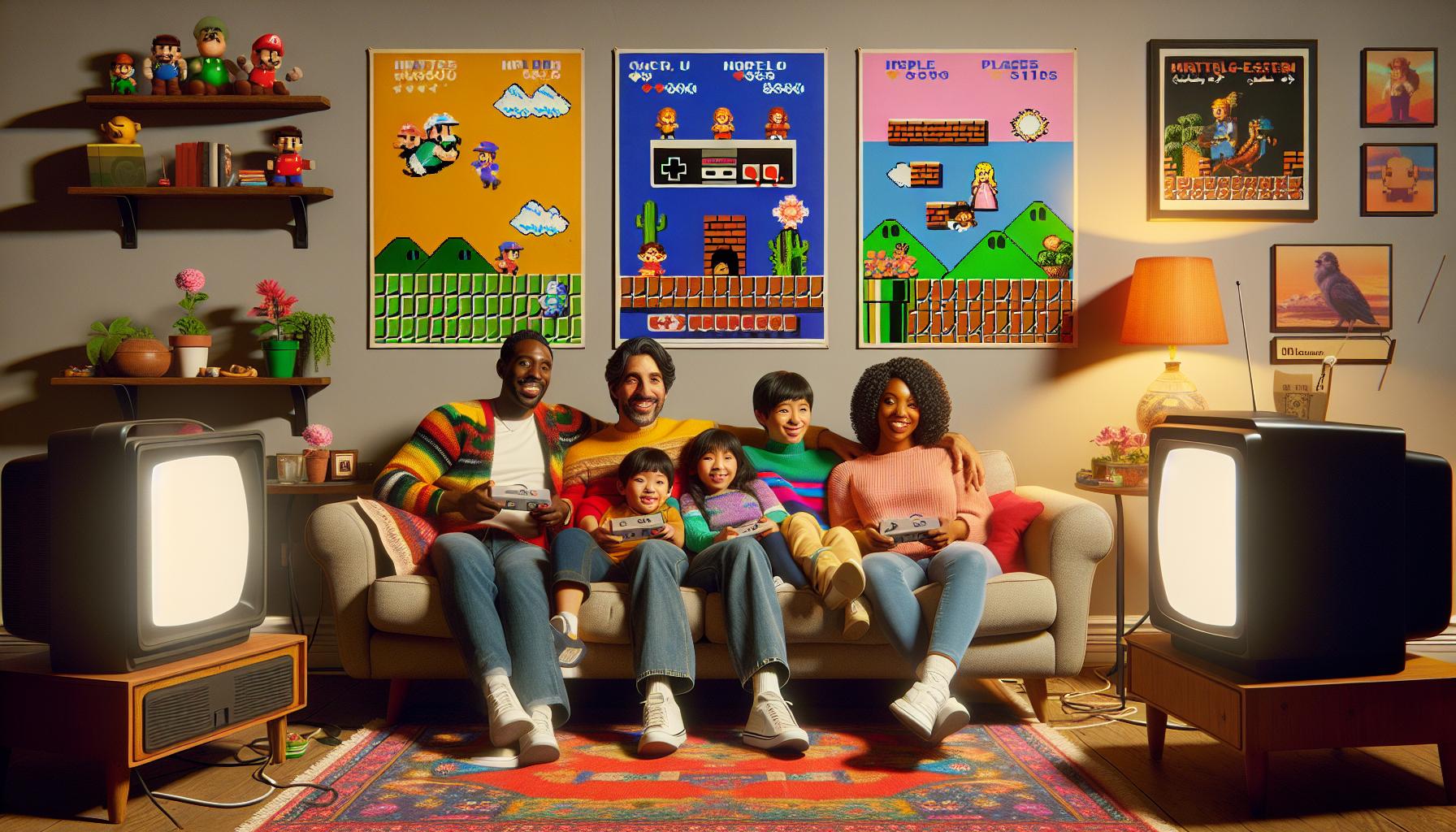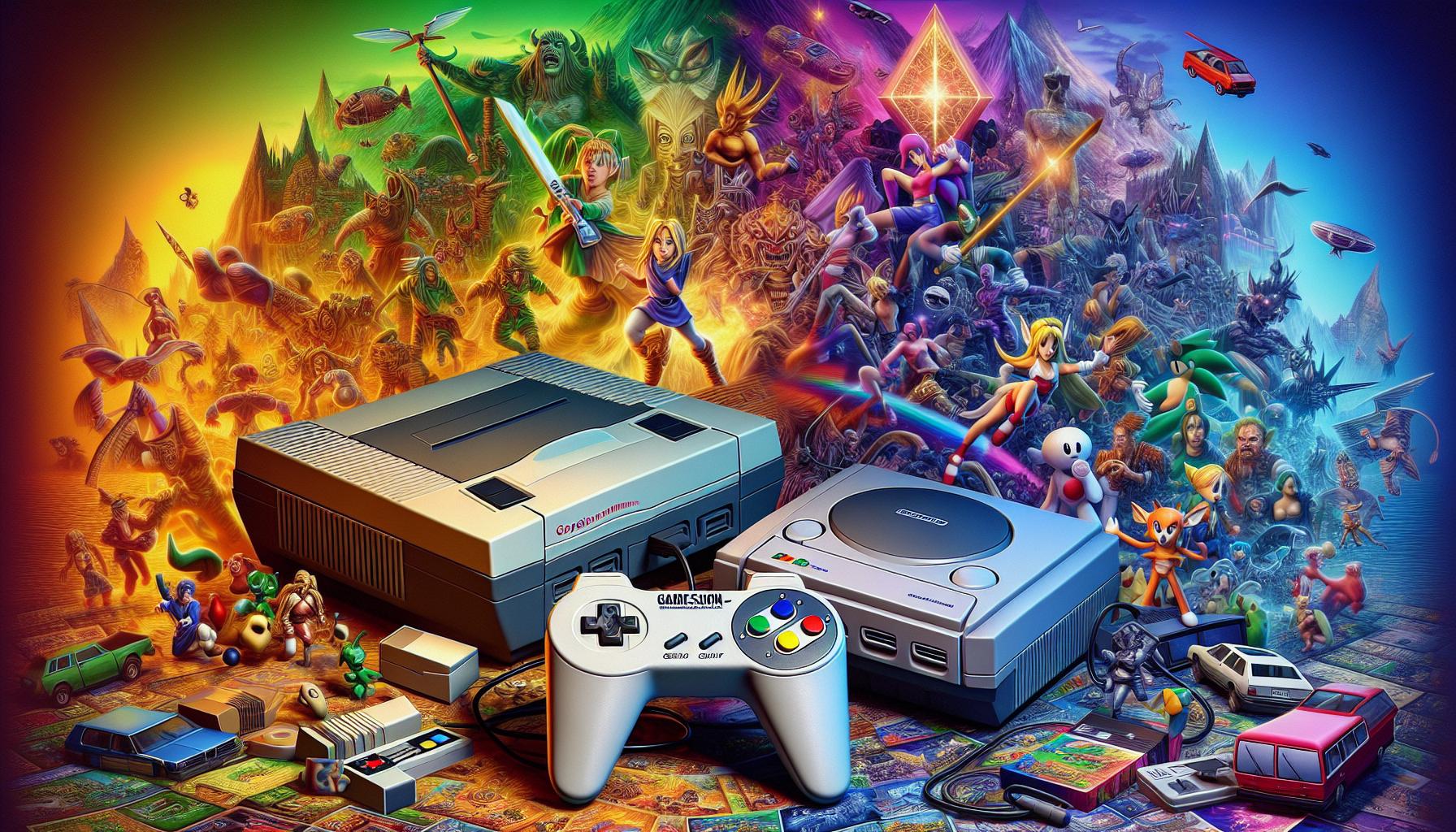From the pixelated wonders of the ’70s to today’s hyper-realistic graphics, the evolution of gaming consoles is nothing short of a wild ride. Each leap in technology has brought new adventures, captivating stories, and a few too many late-night gaming sessions. Who knew that a simple joystick could lead to a global phenomenon?
Early Gaming Consoles
Early gaming consoles laid the foundation for the gaming industry. Their influence shaped the future of interactive entertainment.
Pioneer Systems
Pioneer systems defined the gaming landscape in the 1970s. Magnavox Odyssey, released in 1972, marked the first home video game console. Home Pong, launched by Atari in 1975, popularized gaming in living rooms across America. Both systems utilized basic graphics, focusing on simple gameplay mechanics. RCA Studio II, introduced in 1977, competed with limited successes, struggling against the growing popularity of its peers. Each of these consoles contributed to the foundation of home entertainment and set the stage for future innovations.
Key Innovations
Key innovations emerged from early gaming consoles that revolutionized the industry. Cartridge-based systems allowed for more game options, expanding the library of available titles. Dedicated controllers provided gamers with enhanced interactions, refining gameplay experiences. The introduction of color graphics in the late 1970s captivated players and added visual depth. Multiplayer capabilities encouraged social interaction, making gaming a communal activity. These developments laid the groundwork for more complex systems, paving the way for the gaming evolution that followed.
The Rise of Home Consoles
Home consoles revolutionized gaming, making it a staple in family entertainment. They paved the way for significant advancements in technology and gameplay.
8-Bit Era
The 8-bit era marked a significant milestone in gaming, starting with the Nintendo Entertainment System (NES) in 1985. Iconic titles like Super Mario Bros. emerged during this time, captivating players with vibrant graphics and engaging gameplay. The introduction of power-ups and side-scrolling levels provided a new level of interaction. Players experienced a shift from arcade-style games to titles designed for home consoles. This transition led to widespread popularity and set the standard for future developments in the gaming industry.
16-Bit Era
The 16-bit era built upon the success of its predecessor, introducing the Super Nintendo Entertainment System (SNES) in 1990 and the Sega Genesis in 1989. Enhanced graphics and sound capabilities allowed developers to create more complex games. Titles like Sonic the Hedgehog and Street Fighter II became cultural phenomena, significantly influencing gaming culture. Multiplayer modes expanded social interactions, bringing friends and families together for intense gaming sessions. The 16-bit era cemented the foundation for console competition, establishing brand loyalty and a diverse game library.
The Advent of 3D Gaming

The 3D gaming era marked a significant shift in the gaming landscape, introducing depth and immersion previously unseen. This advancement captured gamers’ imaginations and set new standards for console performance.
Major Releases
Notable releases during this period include the Sony PlayStation in 1994 and the Nintendo 64 in 1996. These consoles showcased cutting-edge 3D graphics, dramatically altering the way games were developed and experienced. Titles like Final Fantasy VII and Super Mario 64 defined this generation, offering rich environments and complex narratives. The PlayStation quickly established itself as a dominant force, selling over 100 million units worldwide. Meanwhile, the Nintendo 64’s iconic four-player capability enhanced social gaming experiences.
Technological Advancements
3D gaming innovations transformed hardware requirements and game design. Enhanced graphic processing units allowed developers to create expansive worlds and intricate character models. Texture mapping emerged as a key technique, adding realism to environments. Moreover, the introduction of analog sticks improved player control, facilitating smoother navigation through rich landscapes. Real-time rendering techniques contributed further, enabling dynamic interactions within games. As a result, the gaming industry witnessed an explosion of creativity, leading to genres like first-person shooters and 3D platformers that captivated audiences.
The 2000s: A Competitive Landscape
The 2000s marked a pivotal era in gaming, characterized by fierce competition and innovative breakthroughs that redefined home entertainment.
Xbox vs. PlayStation
Launched in 2001, the Microsoft Xbox entered the market to directly challenge Sony’s PlayStation 2. Crafted to leverage high-end graphics and online gaming, Xbox introduced the Xbox Live service, allowing players to connect and compete worldwide. Sony’s PlayStation 2, released in 2000, maintained a strong foothold, selling over 155 million units thanks to its extensive game library and DVD playback feature. Gamers gravitated toward both systems, with PlayStation 2’s family-friendly titles and Xbox’s immersive experiences catering to diverse audiences. This rivalry intensified brand loyalty, fostering a passionate community around the leading consoles.
The Emergence of Nintendo Wii
Launched in 2006, the Nintendo Wii introduced motion-sensing gameplay, appealing to a broader audience beyond traditional gamers. Focusing on accessibility, Wii controllers provided intuitive control, attracting families and casual players alike. Featuring titles like Wii Sports, the console encouraged physical activity and social interaction. Nintendo’s innovative marketing strategy positioned the Wii as an engaging platform for both young and elderly players. Reaching worldwide sales of over 101 million units, the Wii demonstrated that gaming could be an inclusive, family-oriented activity, significantly expanding the gaming demographic.
The Modern Era of Gaming Consoles
The modern era of gaming consoles showcases an array of advanced technology and immersive experiences. Current consoles continue to push boundaries in graphics and gameplay.
Current Generation Consoles
Current generation consoles, namely the PlayStation 5 and Xbox Series X, launch new standards in performance. Both systems feature ultra-high-definition graphics with ray tracing capabilities, delivering hyper-realistic visuals. PlayStation 5 boasts a custom SSD that significantly reduces loading times, while Xbox Series X emphasizes backward compatibility with previous generations. Nintendo Switch offers a unique hybrid model, allowing portable gaming alongside home console play. Collectively, these consoles cater to diverse gaming preferences and enhance social interaction through multiplayer experiences, maintaining popularity across varied demographics.
Trends in Technology and Gaming
Trends in technology and gaming reveal significant shifts towards cloud gaming and virtual reality. Services like Xbox Cloud Gaming allow players to stream games without dedicated hardware. Virtual reality systems, such as Oculus Quest 2, immerse users in 3D environments, redefining gameplay experiences. Additionally, more titles incorporate cross-platform play, enhancing social connectivity among gamers regardless of their console choice. With the rise of subscription services like Xbox Game Pass, affordability becomes a priority, granting access to extensive game libraries. These trends indicate a move towards inclusivity and accessibility in the gaming landscape.
Conclusion
The journey of gaming consoles reflects a remarkable evolution that has shaped the entertainment landscape. From the simplicity of early systems to the immersive experiences of today, each generation has contributed to a richer gaming culture. Innovations in technology have not only enhanced gameplay but also fostered community and inclusivity among gamers. As the industry continues to advance with cloud gaming and virtual reality, the future promises even more exciting possibilities. The legacy of gaming consoles will undoubtedly pave the way for new experiences that captivate and connect players around the world.

